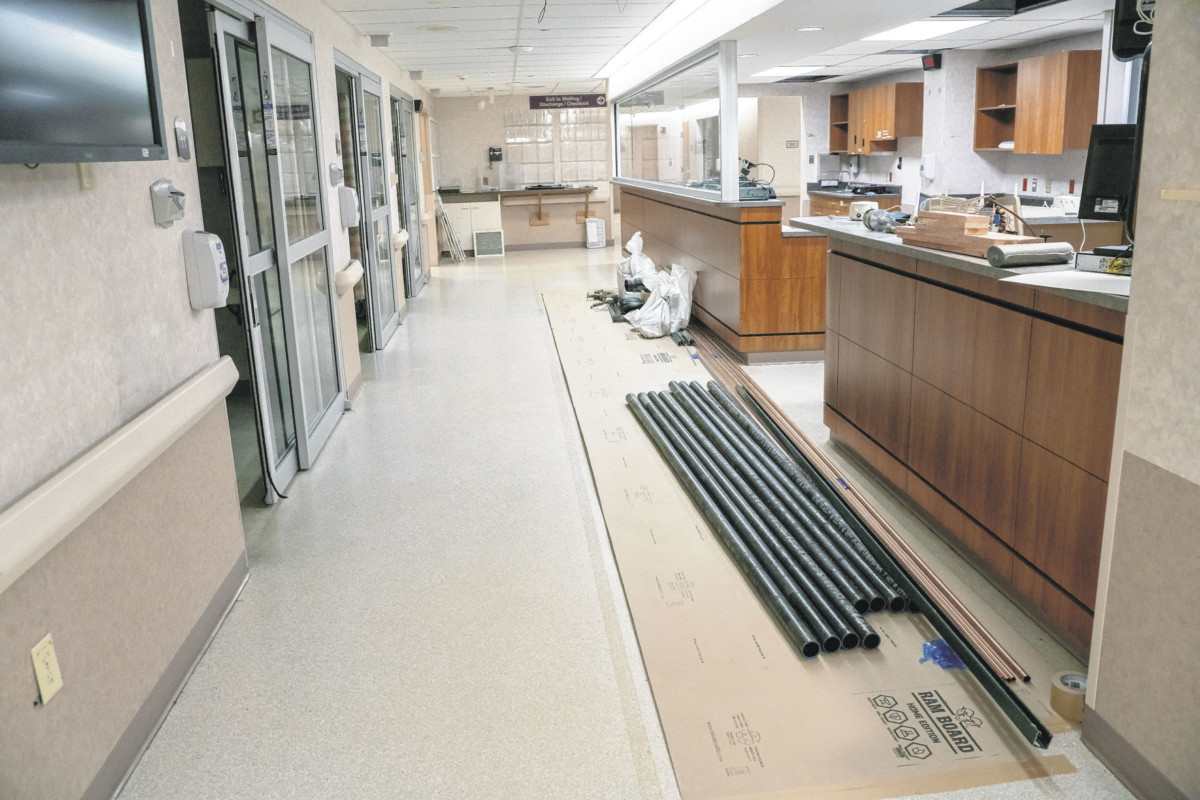Johnson Memorial Hospital’s old emergency room is being turned into a new wound care center which will double the hospital’s capacity and make those services more accessible.
The old emergency room sat unoccupied for several months after the hospital’s new emergency wing opened last July. Then, the old emergency room served as a COVID-19 vaccination clinic from December to the end of March.
Now that the clinic has moved down the hall and $250,000 in renovations are underway for the space’s new purpose, JMH’s new Wound Healing Center is expected to open after July 4, said Abigail Mercer, the wound center’s program director.
Since 2008, the center has served patients with slow-to-heal and chronic wounds — those that have not begun to heal in two weeks or are not completely healed after six months — as well as vein disease care.
The healing center, located on the third floor of the hospital, far away from other departments such as the emergency room, laboratory and radiology services, makes it less accessible to patients, Mercer said.
With this move, the new center will have easy first floor access and be near all the services patients and doctors need access to to complete care regimens, she said.
The larger space will accommodate eight treatment rooms and four hyperbaric oxygen chambers, compared to the three rooms and two chambers it has now, Mercer said.
The registration area, treatment rooms and waiting rooms will remain much the same, with renovations concentrated in the area where the hyperbaric chambers will be housed, she said.
Two additional medical providers who specialize in vein care will also join the center, and arterial vein services will be added at the center, Mercer said.
Patient care involves investigating why the wound has not healed and applying best practices to speed up the process, said Dr. Gaston Dana, the center’s medical director. A team of doctors, nurses and therapists work together as wound detectives to solve painful problems.
“The biggest challenge and the biggest reward is doing the investigation,” Dana said. “We are able to get to the bottom of some of these wounds that people have sometimes had for years.”
The center serves many types of patients, but most commonly those with diabetes or vein disease, both of which are common, he said.
The goal of the center is to intervene as early as possible to give patients a good outcome and to educate other medical providers on the importance of quick action if wounds aren’t healing. A quick referral could be the difference between losing and saving a limb, Dana said.
He also encouraged patients to ask their primary care physician if they may benefit from the center’s services if they are concerned about wound or vein issues.





